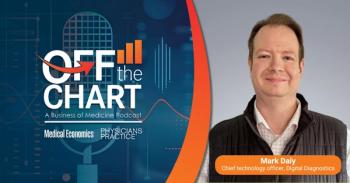
Phone Reports
By gathering and analyzing some basic statistics, you can improve your practice's overall phone efficiency.
Although many physician practices are using computers to share information with hospitals, laboratories, pharmacies, and other doctors, the telephone is still the main tool they use to communicate with patients. Even a modest-sized practice may handle thousands of calls each month, for everything from scheduling appointments to resolving billing issues to clarifying treatment information. But sloppy handling of phone calls and ineffective use of your phone system's bells and whistles can be a significant barrier to efficiency and leads to poor patient service.
"At my doctor's office, they always answer the phone right away, then put me on hold for a long time. What kind of service is that?" says Yvonne Bishop, of Englewood, Colo., who has more than 16 years' experience in call center operations. Service isn't about answering the phone quickly; it's about resolving the caller's request or problem efficiently and effectively. "If the total call handling time is five minutes, and three of that is on hold, that's pathetic," she says.
The good news is that you can run usage reports that easily can be pulled directly from your phone system into a reporting tool. Most phone systems either come with basic reporting software or can use separate software that runs from the computer and is connected to the phone. These reports can show you where your call handling is inefficient so you can correct problems. Generally, this type of data reporting is most helpful for offices that require at least three receptionists.
Basic report metrics
How should you get started? First, see that your telephone system is set up to measure and report data on phone use. A private branch exchange (PBX) is a telephone system that handles incoming and outgoing calls at a single site, such as a medical office. Essentially, PBX helps to bring an office-wide phone system together, network-style. Typically, PBX includes the phones, the equipment that connects them to the outside telephone lines, and the ability to connect to a computer with system management tools. Most PBXs collect real-time call data, which can be exported to a computer equipped with reporting tools. The cost of reporting tools can vary greatly depending upon the manufacturer and the model of your telephone system, and the features available in the software. Some reporting software packages are available for less than $1,000 while others may cost more than $10,000. Check with your phone system vendor to determine what's available to you. To analyze your phone traffic, consider the following metrics:
- All inbound attempts to reach your office;
- Calls received and handled by live people or peripheral equipment such as a call-routing system, automated answering system, or phone queue - not including calls that abandon or receive busy signals;
- Abandoned calls (hang ups);
- The average time that callers wait before hanging up;
- The average time a caller waits before reaching an operator;
- Average talk time;
- Average hold time;
- Call length (talk time plus hold time);
- Number of transfers.
Bishop says that a thorough analysis should track these metrics on at least an hourly (preferably half-hourly) basis every business day during regular business hours for four to six weeks. "This will give you your basic call arrival pattern," she says. "It's best to build the arrival pattern during 'clean months,' or months with no major holidays," such as March or June.
Identifying patterns, problems
From the basic call arrival pattern, you can identify peak call arrival times. For example, many practices receive a high number of appointment calls on Monday mornings, and each afternoon from patients seeking lab results. Similarly, there will be times of relatively low call volume.
"You should also look at what happens around holidays or during different seasons," Bishop says. "Winter is cold and flu season and you may get a greater number of calls during those months. Or in the summer, you may get more emergency calls for accidents. You may need to make seasonal staffing adjustments because of changes in call volumes, or because different types of calls take different times to handle."
To effectively handle daily and seasonal variations in call volumes, Jack Valancy, a practice management consultant based in Cleveland Heights, Ohio, recommends using part-time or temporary help when necessary, altering work schedules to ensure maximum staffing during peak call times. Practices can also schedule their outbound calling for times when inbound volumes are low. Asking other staff members to help answer phones during peak hours is an option, too.
"Sometimes the receptionists are overburdened," he says. "Some people on staff may not want to answer phones because it's 'not in their job description.' But that's a management issue. You can train people to answer the phones, even if it's to take a message or transfer to voice mail. And don't think the doctors can't answer the phones. When the phones are ringing and workers see management pitching in, it's a lot more compelling than having management mandating that staff pick up the phone."
Transfers are another problem that reports can identify. Reports should be able to tell you, by extension, how many internal transfers are made and from whom to whom.
"I don't like it when I call someplace, talk to someone, get transferred, talk to someone else, and so on, until I get transferred back to the first person I talked to," says Valancy.
Because many practices use receptionists or phone operators to answer calls, Valancy says transfer data can show you if your call transfer tactics are working and whether the people to whom calls are transferred are helping to resolve issues or are passing them on.
If your practice uses an automated call routing system, transfer data can help you review your automated strategy. Many phone systems have simple call routing trees that can route calls to the correct extension. It may ask callers to press one for appointments, press two for lab results, and press zero to speak to an operator, for example. "The report should show you how many times callers have pressed one, two, or three, then you can look at if or how the call is rerouted," Bishop says. If the report shows that more callers press three than one, consider changing the order of your selections. "I would recommend that option one be saved for emergency calls so that those callers receive immediate assistance. Option two should be your highest volume call, like appointment setting," she adds. All other options should be listed in order of volume. "Try not to exceed four or five options because callers generally won't listen to more than that," Bishop says.
A well-designed automated router can significantly reduce the number of calls that operators answer, according to Debbie Gibson, who oversees communication systems for Neurological Surgeons, P.C. in Nashville, Tenn., which has nine physicians and six locations. "The number of calls answered by our operators dropped from 6,000 per week to 4,000 per week when we added the [routing] tree," she says.
Estimate workloads
Most reporting software allows you to sort call data by extension, by work group (billing, appointments, physicians), by line of business (internal medicine, oncology, OB/GYN, imaging) or for an entire practice. You can uncover a basic call arrival pattern for any of them, depending upon your needs. From there, you can develop a staffing model that best fits your phone traffic.
First, consider the total workload of the phone operators, Bishop says. This includes the inbound average handling time, which is the sum of inbound call times and how long it takes to perform the work that the calls generate. It should also include outbound call times for appointment reminders, for example. Inbound and outbound call times should be available from the phone reports. Unless you use a call center with advanced reporting capabilities, you will need to estimate after-call work time.
Next, calculate the amount of time operators will be able to handle calls, which equals the amount of hours in their regular shift minus break times and lunch. Divide that time by the average workload, and you arrive at the number of calls an operator should be able to handle on an average day. Divide the average number of calls your practice receives daily by the average number of calls an operator should be able to handle to determine how many people you will need to work your phones.
For larger practices, it also pays to keep your operators in one location. A single call center handles all phone traffic for Neurological Surgeons, P.C. "A lot of what we've done with our telephones is by staffing appropriately," Gibson says. "By having a central staff, we do not have to have a switchboard operator at each of our facilities. It helps keep staff down."
Finally, Bishop recommends using call report data for forecasting future call volumes. Your call volumes will grow as your practice grows, but your call arrival pattern should remain consistent. "Try to forecast based upon patient population," she says. "Look at the number of patients and look at the number of calls. How many inbound calls do you receive and how many outbound calls do you make, on average, per patient?"
Using your phone system efficiently and effectively ultimately results in improved service to your patients, Valancy says. It shows that you respect their time. And respecting your patients is good for business.
"You want to give people terrific service. First, it's the right thing to do," he says. "But remember, healthcare is competitive and it's going to get more competitive, not less competitive. And patients will switch if they don't like the way they're being treated." Sandy Campbell can be reached at
This article originally appeared in the April 2003 issue of Physicians Practice.
Newsletter
Optimize your practice with the Physicians Practice newsletter, offering management pearls, leadership tips, and business strategies tailored for practice administrators and physicians of any specialty.














